This article was co-authored by Clinton M. Sandvick, JD, PhD. Clinton M. Sandvick worked as a civil litigator in California for over 7 years. He received his JD from the University of Wisconsin-Madison in 1998 and his PhD in American History from the University of Oregon in 2013.
This article has been viewed 108,986 times.
A car title is a legal document containing important information about the vehicle and its owners. Whenever a car is sold or transferred to another owner in any way, the title has to be transferred to reflect the vehicle's new ownership. If you take ownership of a car, your will have to get the title transferred in your name. To do this, gather important information and fill out Department of Motor Vehicle (DMV) forms. To complete the transfer and get title in your name, you will have to visit your local DMV office, submit your paperwork, and pay a fee.
Steps
Changing Ownership of the Vehicle
-
1Buy a car from a dealership. A transfer of ownership takes place whenever a car changes registered owners.[1] One of the most common ways this takes place is when you buy a car from a dealership. Before you buy the car, it is owned by the dealership or the manufacturer. Once you purchase the vehicle, title needs to be transferred into your name.
- When you buy a car from a dealership, they will make this transfer for you. All you need to do is show a valid driver license.[2]
- Therefore, if you buy a car from a dealer, getting title in your name is as easy as completing the purchase.
-
2Buy a car from a private seller. A lot of cars are bought from private sellers. Private sellers are people selling a car that are not associated with any dealership. For example, if you buy a car from your neighbor, you are buying from a private seller. When you buy a car from a private seller, you will pay the seller a certain sum of cash (or you will exchange property) in exchange for the vehicle. The seller will have to provide you with certain documents (e.g., bill of sale), signatures, and certifications. Each state will have different requirements.[3] Check with your local DMV if you have any questions.
- When your purchase is complete, you will have to start the title transfer process.
Advertisement -
3Inherit a vehicle. A vehicle can also change owners if you inherit it, which means you get it from someone who passed away. If this happens, the estate's executor or administrator will inform you that the deceased has gifted you a car. The administrator will have taken certain steps to start the transfer process.
- Once you inherit the vehicle, you will have to start the title transfer process.
-
4Take part ownership in someone else's vehicle. Some people want to have another person's name added to their vehicle's title. For example, if you and your spouse just got married, your spouse might want to add you to their car's title. This act is also considered a transfer of ownership and will require you to go through the title transfer process.[4]
Gathering Information and Filling Out Forms
-
1Navigate to your state's DMV website. Each state has different requirements for transferring a car title into your name. For this reason, it is important that you research the specific requirements in your state. Your state DMV website should contain a detailed description of the process, including what forms you need and what information you need to gather. However, if you cannot find the information you are looking for online, visit your local DMV office in person.
- When you search your state's DMV website, try looking for some of the following terms and keywords: selling/buying a vehicle, transferring title, transferring ownership, change in ownership. If you can find information about these topics, you will be well on your way to getting title in your name.
-
2Work diligently. Once you buy a vehicle or the vehicle is in some other way transferred to you, you must work quickly to get title in your name. Every state requires you to transfer title into your name within a set time frame. If you submit your transfer documents late, you will have to pay a late fee.
- For example, in Washington, you have 15 days to transfer title into your name after you buy or get a vehicle as a gift. If you transfer title into your name after the 15 days, you will have to pay penalties.[5]
-
3Retrieve an odometer disclosure statement. The federal government requires you to disclose the odometer reading on your vehicle to the DMV when you take ownership of it. The only times you will not have to make this disclosure is if the car is over 10 years old, it is a commercial vehicle with a weight of more than 16,000 pounds, or if it is being transferred prior to its first sale by a dealer (e.g., the car is being transferred from manufacturer to dealer).[6]
- To make this disclosure, you will need to obtain a specific form from your state DMV. The forms are not usually available online, through email, or through fax because it is printed on tamper proof paper.
- To get a copy, pick one up at your local DMV, send a request to your local DMV, or call your local DMV. If you do not pick the form up in person, it will be mailed to you within a couple of days.[7]
-
4Get an emissions testing report. In a lot of states, when a car transfers owners, a smog or emissions test must be conducted. These reports provide the DMV with information about how your car's engine is working and whether the vehicle is a pollution hazard. Each state that requires these reports will handle them differently. For example, if you live in Washington, the buyer will have to get an emissions testing report if they live in certain counties.[8] In California, however, the seller is responsible for obtaining a smog certification prior to transferring ownership to you.[9]
- If you, as the buyer, are responsible for obtaining an emissions report, you will most likely have to pay a fee to have it done. The fees will vary but usually range from about $30 to $100.
-
5Ask the seller to complete a notice of transfer and release of liability. When a private seller transfers ownership of a car to you, they must give the DMV notice of that transfer. This notice must be given within a few days after the transfer takes place. In California, for example, the seller must submit the notice and release of liability within five days after transferring ownership to you.[10] Make sure the seller completes this step so the title transfer process can go smoothly.
- If the seller lost the title, they will have to fill out an affidavit swearing under oath that they are the owner of the vehicle and that they have the right to transfer ownership to you.[11] Make sure this is done before you submit your title transfer documents to the DMV.
-
6Keep your bill of sale handy. The bill of sale is a form that you and the seller will fill out jointly when ownership is transferred. However, the bill of sale does not transfer title and does not act as a notice of transfer. It is meant to help both parties gather required information. The bill of sale will include the seller's personal information, the buyer's personal information, and information about the vehicle.[12]
- Bill of sale forms can usually be found online at your local DMV website. If you are having trouble finding the form, contact the DMV.
-
7Complete a title application. The title application is the main form you will use to transfer the car's title into your name. Most DMV websites will have this form available for you to download and print.[13] If you need help obtaining a copy, call your DMV. In addition to finding the form, see if you can find directions on how to fill it out. These forms often ask for a lot of information that is either not required or that you will not readily know. Once complete, have the form signed in front of a notary. In general, the title application will ask you for the following information:[14]
- The vehicle's license plate number
- The car's color
- VIN number
- Model year
- How the car is powered (e.g., gas, diesel, hybrid)
- Use (e.g., passenger, truck, motorcycle)
- Make
- Body type (2-door, 4-door, pickup, convertible)
- Weight
- Mileage
- Your name as you would like it to appear on the title
-
8Obtain proof of liability insurance. Before you go to the DMV to submit your documentation, you need to get proof of insurance. This will need to be taken to the DMV along with everything else. Each state will have different insurance requirements and different ways of showing proof. For example, in North Carolina, you can offer proof of liability insurance by showing any one of the following:
- A specific form from your insurance agent
- Your vehicle's insurance policy
- An insurance binder
- An insurance card
Completing the Title Transfer
-
1Visit your local DMV. Most, if not all, state DMVs will require you to submit your title application and attachments in person. Find the DMV that is most convenient for you and find time to go. Some DMVs will allow you to make appointments so you do not have to wait in line. Regardless, leave yourself plenty of time to complete the process. Going to the DMV can often take hours.
-
2Submit your paperwork. Once your number is called at the DMV, move to the proper counter and tell the employee that you need to file a transfer of title application. The employee will ask you for specific information, all of which you should have on hand. In general, you will be required to submit the:[15]
- Bill of sale
- Title application
- The current title
- Emissions testing report
- Affidavit of loss
- Odometer disclosure statement
-
3Pay the fee. Once you submit all of your documentation, the DMV employee will determine what types of fees you owe and how much the total application will cost. The cost of transferring title will vary greatly from state to state. In addition, some states require you to pay other fees in addition to transfer fees. Also, if you were late filing, you will have to pay a late fee. In California, for example, you may be required to pay one or more of the following fees:[16]
- Transfer fee
- Use taxes (based on where you live)
- Registration renewal
- Planned non-operation
- Duplicate title
-
4Receive the title with your name on it. Once your forms have been submitted and your fees paid, the DMV will process your application and sen you a new title with your name on it. The wait time to get your new title will vary depending on what state you live in and what type of application you filed. For example, in Washington, you can expect your new title eight to ten weeks after you submit your paperwork. However, if you paid extra to have the application review expedited, you will receive your new title sooner.[17]
References
- ↑ https://www.dmv.ca.gov/portal/dmv/detail/pubs/brochures/howto/htvr32
- ↑ http://www.dol.wa.gov/vehicleregistration/transferdealer.html
- ↑ https://www.dmv.ca.gov/portal/dmv/detail/pubs/brochures/howto/htvr32
- ↑ https://www.dmv.ca.gov/portal/dmv/detail/pubs/brochures/howto/htvr32
- ↑ http://www.dol.wa.gov/vehicleregistration/transferprivate.html
- ↑ https://www.dmv.ca.gov/portal/dmv/detail/pubs/brochures/howto/htvr32
- ↑ http://www.dol.wa.gov/vehicleregistration/transferprivate.html
- ↑ http://www.dol.wa.gov/vehicleregistration/transferprivate.html
- ↑ https://www.dmv.ca.gov/portal/dmv/detail/pubs/brochures/howto/htvr32
- ↑ https://www.dmv.ca.gov/portal/dmv/detail/pubs/brochures/howto/htvr32
- ↑ http://www.dol.wa.gov/vehicleregistration/transferprivate.html
- ↑ http://www.dol.wa.gov/forms/420065.pdf
- ↑ http://www.dol.wa.gov/forms/420001.pdf
- ↑ http://www.dol.wa.gov/forms/420001.html
- ↑ http://www.dol.wa.gov/vehicleregistration/transferprivate.html
- ↑ https://www.dmv.ca.gov/portal/dmv/detail/pubs/brochures/howto/htvr32
- ↑ http://www.dol.wa.gov/vehicleregistration/transferprivate.html
About This Article
A car title is a legal document containing important information about the vehicle and owner. When a car is sold or transferred to another owner, the title has to be transferred too. If you buy your car from a dealership, they will make the transfer for you. However, if you buy from a private seller, you’ll want to visit the DMV website to find out your state’s requirements. Typically, you’ll only have a few weeks to get your paperwork filed, including an odometer disclosure statement, an emissions testing report, and a notice of transfer. In addition to this paperwork, you’ll need to complete a title application, which will ask for such things as the car’s color, VIN number, model year, and mileage. Finally, visit your local DMV to submit your paperwork and the fee to receive your title. To learn how to get a title if you inherited a car, keep reading!

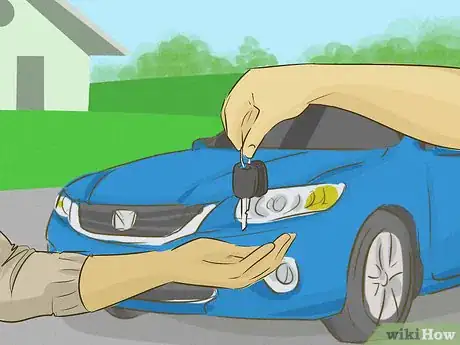


-Step-1.webp)
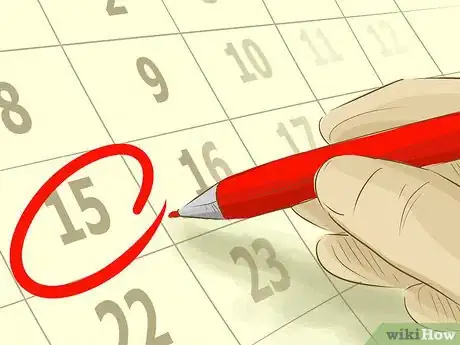











-Step-17.webp)





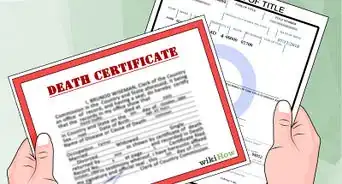

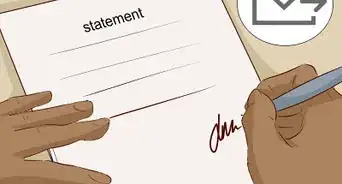

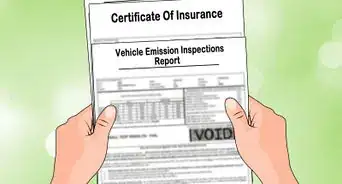
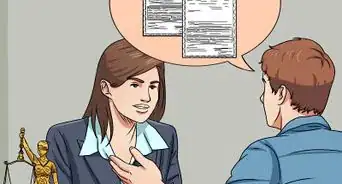
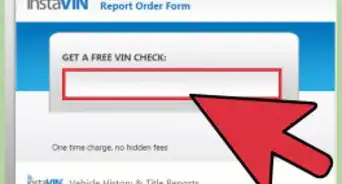








-Step-17.webp)




































